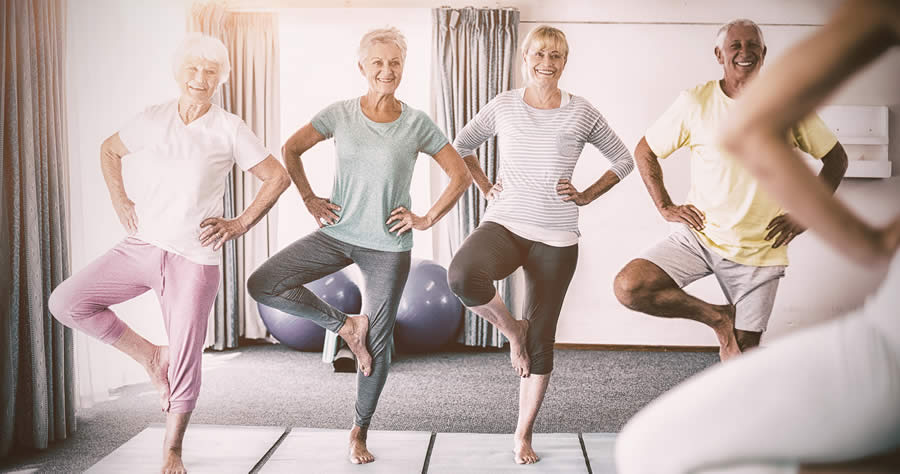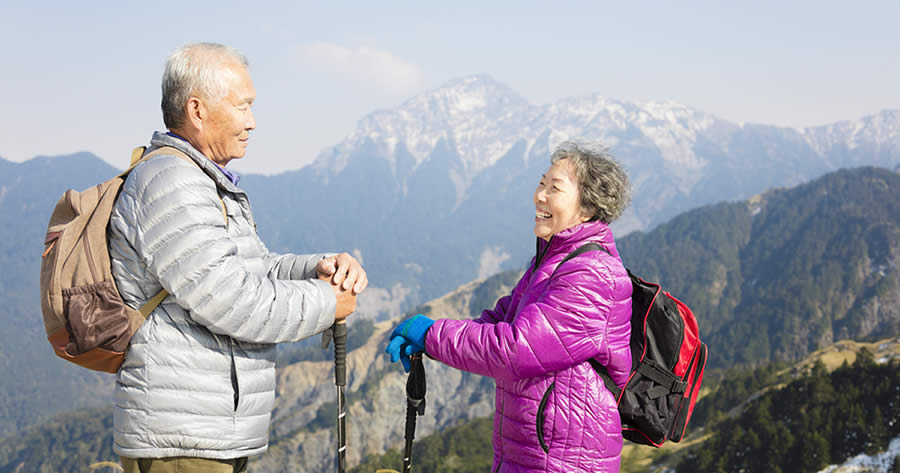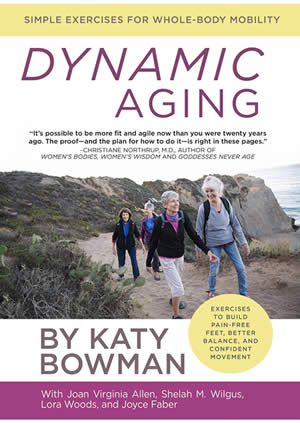Improving Your Balance as You Age
Balance is quite literally the foundation of your mobility, and for many older people noticing a loss of balance can be scary. According to the U.S. Centers for Disease Control and Prevention, falls are the leading cause of fatal and non-fatal injuries for older Americans. One in four Americans aged 65+ falls each year.
A loss of balance may not only threaten your safety, but it can also greatly impact your confidence and independence. But there’s good news: not only is it possible to halt the loss of balance, but it’s also possible to reverse course and become even stronger and steadier than you were five, 10 or even 20 years ago. Learn how to improve your balance as you age and incorporate some balance exercises for seniors into your daily routine.
What Is Balance?
When someone says “good balance,” you might see an image of a person standing on one foot steadily for a long period of time. Or, you might imagine a hiker traversing steep, uneven terrain with ease. But what actually makes up the components of good balance?
Balance is, in part, your body’s sense of its position in space. Harvard Medical School explains that this largely unconscious capacity—the medical term for it is "proprioception"—is what allows us, for example, to walk in the dark without losing our balance or to distinguish the brake from the accelerator without looking at our feet. The American Council on Exercise says that “optimal balance is achieved when multiple sensory systems provide information about the body’s position as it moves over the ground. The eyes (visual), inner ear (vestibular) and skin (kinesthetic) contain numerous sensory receptors that provide important feedback to the central nervous system (CNS) about which muscles to activate and when.” The strength of the muscles involved—from your legs and feet to your core and back—have an impact on your balance.
When and Why Does Balance Start to Decline?
Findings recently published in Journals of Gerontology: Medical Sciences found that balance for the average person begins to decline in the 50s. The study tested adults ages 30 to 90+ on several physical performance measures, such as balance, ability to stand and sit repeatedly, and aerobic endurance. Of all traits tested, balance began to decline the earliest in life.
Age-related muscle loss, known as sarcopenia, is a key reason our balance declines as we age. Research indicates that after the age of 30, we begin to lose up to 3 to 5 percent of our muscle mass per decade.
As author and biomechanist Katy Bowman discusses in her book Dynamic Aging, these kinds of declines in strength and balance don’t have to be the norm—and these “on average” declines are most certainly related to the sedentary nature of most of our lifestyles. Instead of thinking about a loss of balance tied to age, per say, it’s more accurate to think about a loss of balance being tied to a long streak of movement deficit. Katy notes that “it’s very likely the instability you are feeling is not due to your age, but to how long you haven’t been challenging your balance.”
How Balance Relates to Your Shoes
In Dynamic Aging, Katy discusses how our shoes relate so closely to our mobility and balance. She describes most shoes as a kind of stiff cast that greatly limits movement and cramps our toes together. Over our entire lifetimes, these qualities profoundly limit the ability of our muscles to develop naturally. For long-term, optimal development of balance and healthy movement, she advises everyone to look for shoes that have these qualities:
- Wide toe box. You should be able to completely spread your toes in your shoes.
- Minimal heel: Elevation in the heel of your shoe changes the alignment of your body. It’s best to keep your weight on your heels, so you don’t want your shoes forcing your forward.
- Flexible sole: In order for the many bones, joints, and muscles I your feet to stay healthy and strong, you need a really flexible shoe and allows the most movement possible. Most modern shoes are far too stiff to allow natural movement. Twist and bend your shoe to see how flexible it is.
- No toe spring: Many shoes curve upward in the toe area, so your toes are forced upward. Look for shoes that allow your feet to lie naturally.
As we’ve discussed many times on this blog, transitioning to this type of minimal, flexible footwear should be done slowly and gradually.
Balance Exercises for Seniors

For a complete set of recommendations and exercises to boost your balance, we highly recommend the book Dynamic Aging mentioned above. In this book, Katy Bowman offers dozens of tips and exercises to help you improve your balance, mobility, strength, bone density, and joint health. To get you started, here are a few of our favorite exercises from Katy’s book. Note: Please talk to your doctor and carefully consider your starting point before you embark on any exercise routine.
- The Pillow Walk. On your floor, lie down a strip of low, soft pillows, cushions and towels. In bare feet, walk back and forth over the strip. This is a very gentle exercise, and the variability in the surfaces will challenge new muscles.
- Calf Stretch. Tight calf muscles can limit the full range of motion of your ankles. To effectively stretch your calves, place a thick rolled towel or half foam roller on the floor. In bare feet, place the toes and ball of one foot on the roll. Don’t bend your knees and keep your body upright. Step forward with the opposite foot. You may only be able to step forward a bit at first. Do the stretch next to a wall or chair in case you need it for balance assistance.
- Chair Squat: Sit upright on a flat, hard chair with ankles stacked directly below your knees. Reach your arms up and lean your torso forward as you shift your weight onto your heels and stand up. Sit back down slowly with the weight still back on your heels. If this is too difficult or causes pain, stack towels on the seat to give yourself a bit of a lift.
The key with balance exercises is to get started somewhere. No matter how slowly and gently your movement starts out, you’ll improve over time. In her book, Katy features four women who started her balance routines in their sixties. Between them, they had struggles such as foot problems, knee pain, nerve pain, back pain, and pelvic organ prolapse, all of which were limiting the possibilities in their lives. Now all in their mid- to late-seventies, these women are far more mobile than they were a decade earlier all because they adopted Katy’s model of whole-body movement and wellness. They each hike several miles a day and are happy and thriving.
For more information about Katy Bowman's research, visit www.nutritiousmovement.com.

Shelley Stonebrook is a writer and editor who is passionate about the outdoors and environmental advocacy. She lives and gardens with her husband and daughter in Corvallis, Oregon.



